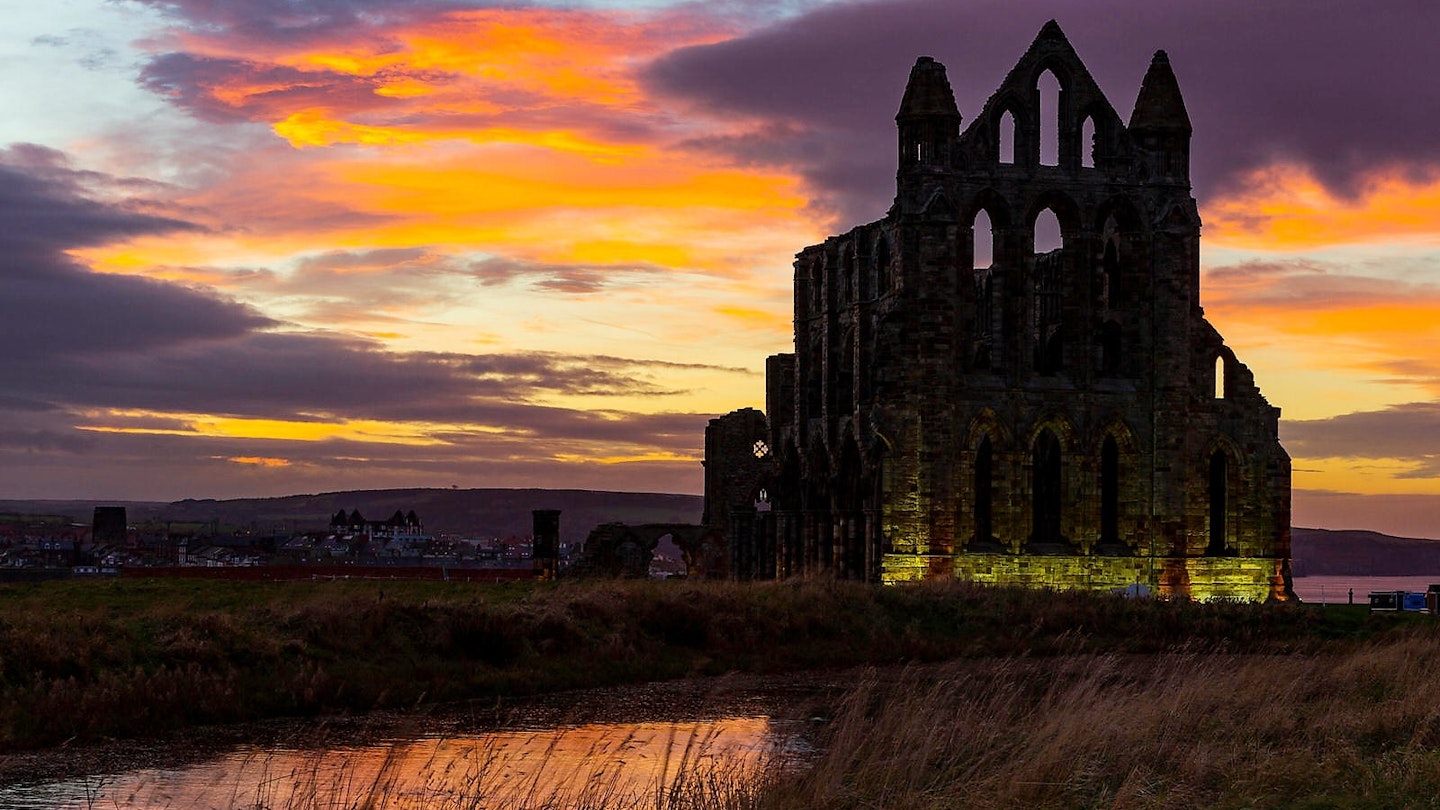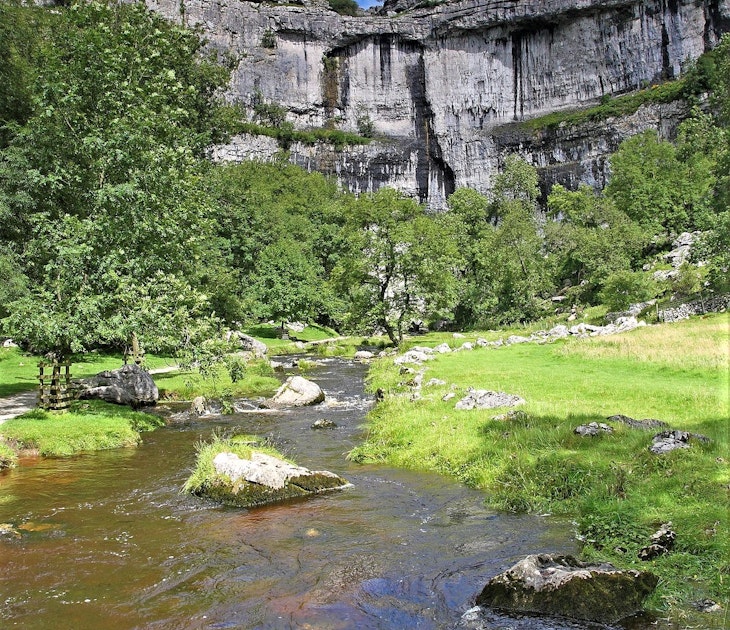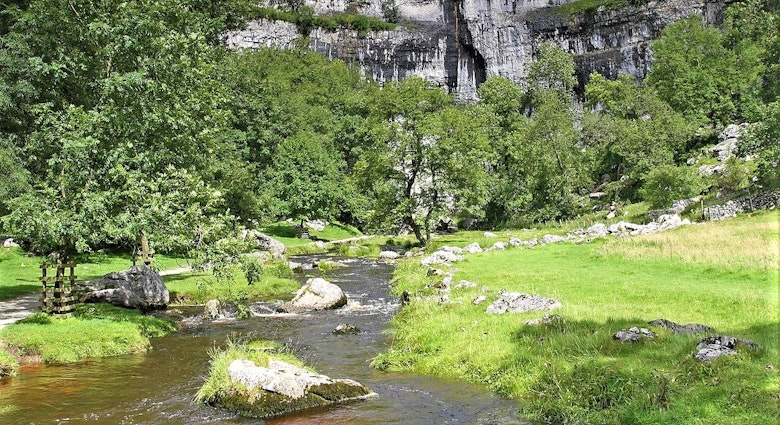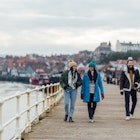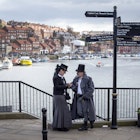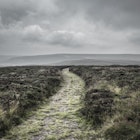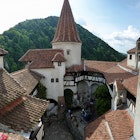On a stormy night the schooner Demeter is blown into Whitby harbour. An immense black dog jumps ashore and disappears into the darkness. On board, lashed to the helm, is the corpse of the captain, clutching a crucifix. With this scene depicting Dracula’s arrival in England, Bram Stoker’s classic 1897 novel established this pretty Yorkshire seaside town’s reputation as a gothic icon.
Today, still loomed over by the spectral ruins of the medieval abbey that inspired Stoker, Whitby feeds on its fame as a place of strange happenings and alternative lifestyles. You can see it in the steampunk goggles on stalls in the Georgian Market Place, in spindly Church Street’s stores peddling Whitby Jet jewellery, and in the clairvoyant’s hut near the award-winning Magpie fish-and-chip shop.
There’s something about this town’s twisting cobbled lanes and backdrop of an often-angry North Sea that lend themselves to things that go bump in the night and draw Goths here in their droves.
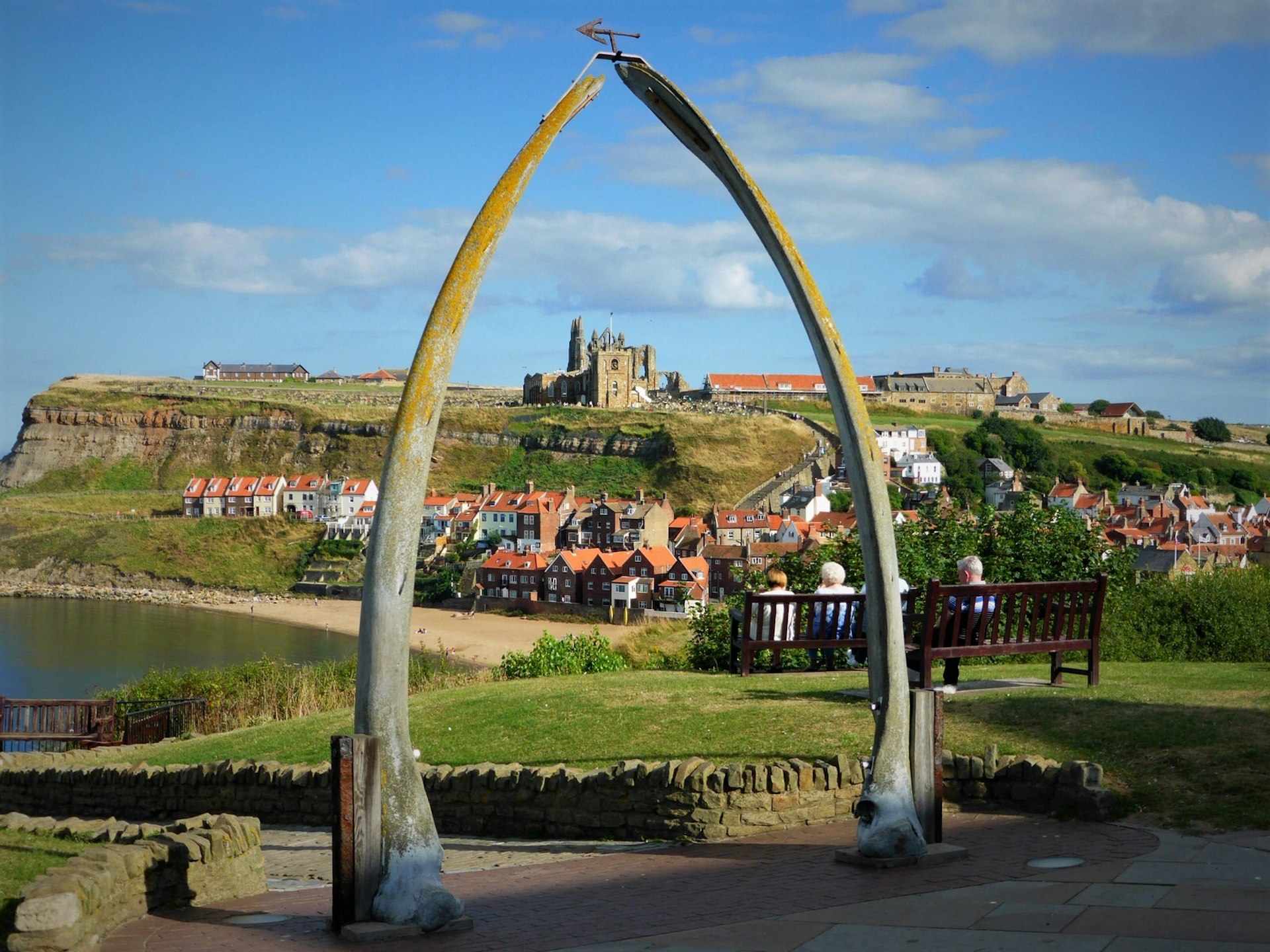
Why Whitby?
‘It’s no coincidence that Bram Stoker chose Whitby to be a central town in his novel,’ says Karl Wittering, who runs ghost walks here. ‘Whitby has more ghosts per square mile than any other town in Britain. We’re an isolated town. There’s nothing for 20 miles to the north or south and even more to the west. So Whitby locals are a very suspicious breed of people, and with good reason, because we see the darker side of Whitby.’
Indeed, this town has been enthralled by the occult ever since the Anglo-Saxon abbess Hilda, who established Whitby Abbey in 657 AD, supposedly vanquished local snakes and serpents by driving them off the top of the abbey cliff and turning them to stone with the heat of her rage (this was medieval lore to explain why Whitby’s beaches are littered with coiled ammonite fossils).
When the abbey fell into ruin after the dissolution of the monasteries in the 16th century, its skeletal remains formed a landmark that serves Whitby’s predisposition towards the ghoulish and macabre well. ‘St Hilda still haunts Whitby Abbey to this day. Many people have seen Hilda – even photographed her,’ says Karl.
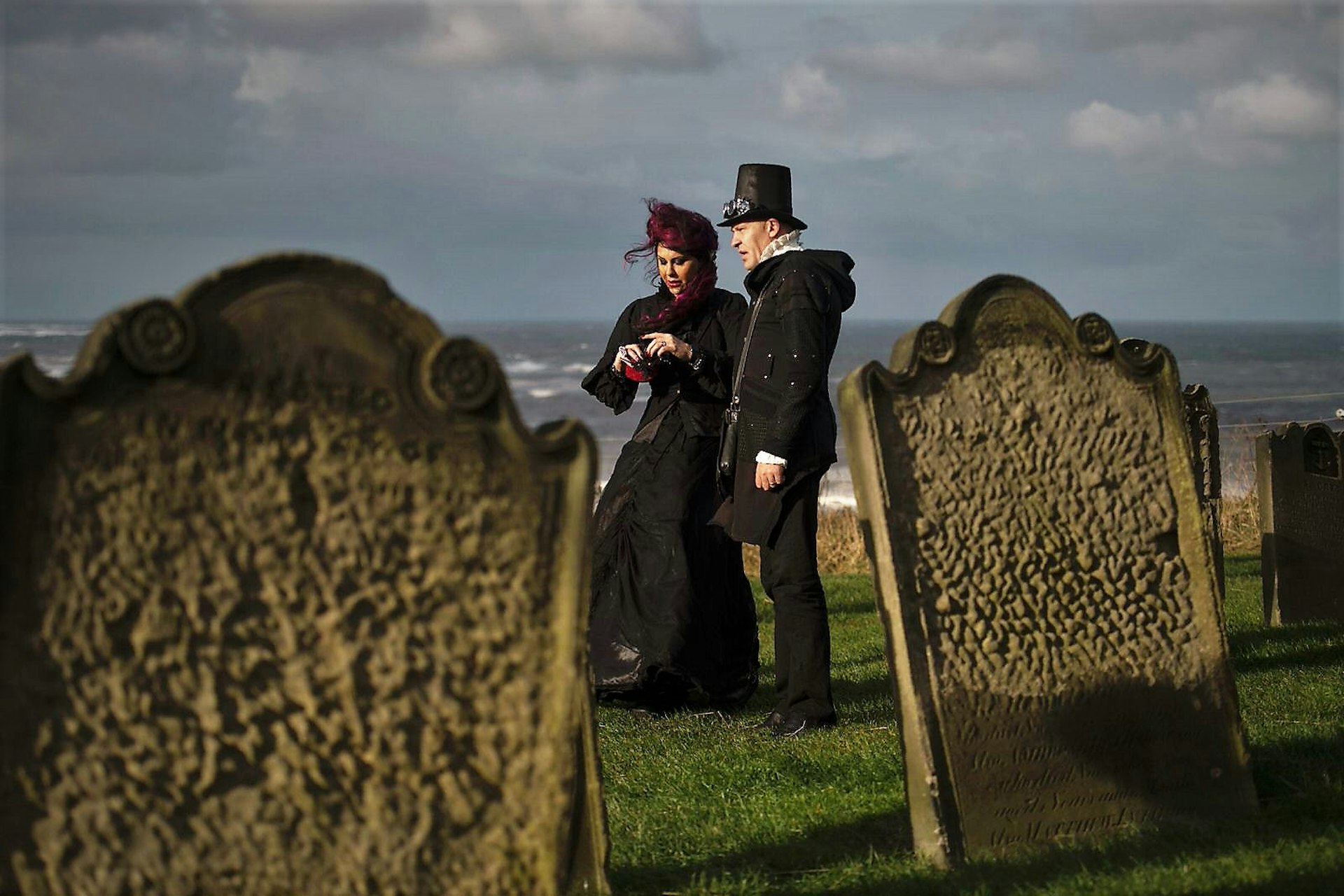
Bram Stoker’s inspiration
West Cliff is the best vantage point from which to truly gain an appreciation of the abbey’s bones, perfectly framed at the top of the Khyber Pass by a 20ft whalebone arch – a homage to Whitby’s seafaring heritage.
Part of the reason why Whitby is so atmospheric is undoubtedly that it has changed little for hundreds of years – this is the same view that stirred Bram Stoker when he stayed on West Cliff in the 1890s. Come Halloween, the Bram Stoker Memorial Seat above Khyber Pass, where the writer sat to contemplate the ruins, sees a steady stream of devoted pilgrims.
Back across the harbour, almost in the shadow of the abbey, St Mary’s Church and its sea-salt-bitten graveyard squat perilously close to the East Cliff edge. Human bones were exposed after torrential rain caused land erosion here in 2012. Locals called this place ‘the hill of the dead’ long before the Irish novelist set foot in town, because of the ghostly Barguest coach. This is Whitby’s most famous apparition – a funeral wagon pulled by headless horses, that visits the graves of sailors.
But when Bram Stoker wrote the churchyard into Dracula as a haunt of the Count, he secured its popularity with visitors. ‘So many tourists come looking for Dracula’s grave that we’ve had to put a sign on the door saying he isn’t real,’ admits the church’s warden.

A festival phenomenon
Whitby’s biggest influx of gothic fans is during its twice yearly Goth Weekend. Spurred on by Dracula’s legacy, since its inception in 1994 it has become the biggest goth gathering in the UK, attracting several thousand visitors, most of whom paint the town black with latex, make-up, costumes and props.
The original event includes the Bizarre Bazaar and an alternative music festival, but in 2018, for the first time, a competing event called Tomorrow’s Ghosts Festival (26-28 Oct) will inhabit the Whitby Pavilion and promises film and theatre too.
Of the two Goth Weekends held here, the Halloween one puts on the biggest show for visitors and is a boon for local businesses at a time of year when tourism would otherwise be slowing down. The abbey is garishly illuminated and Whitby’s shops and cafes set their thrill-o-meter to maximum by decorating themselves with creepy cobwebs, gruesome ghouls and bloodsucking (but fake) bats.
Across the road from Bram’s bench is La Rosa, a hotel famed for its Lewis Carroll association (he holidayed here) and its marketing success as a glamorous gothic bolthole. The hotel’s public tearoom is home to a life-sized figure of Alice with skin as white as snow and lips as blood-red as the Queen of Hearts'.
‘We’re always fully booked in advance for Goth Weekend and the tearoom is very busy with superbly dressed visitors,’ says Helen Calam, co-owner of La Rosa. ‘Whitby was steeped in folklore well before Bram Stoker wrote Dracula here, but that connection pretty much seals the deal [for goths].’
The witches of Whitby
While regular British holidaymakers spend fleeting summer beach breaks on Whitby Sands, those who feel the town’s spooky pull, as Bram Stoker once did, put down roots: Whitby has been home to pagans, witches and warlocks for hundreds of years, and their numbers continue to grow.
One of the town’s most macabre attractions is the ‘hand of glory’ in the museum at Pannett Park: an ashen mummified human hand purportedly cut from a hanged man and used by local witches to ward off discovery in the 19th century.
‘In Whitby there is a conjunction of three ley lines. This is why a lot of the witches stay in Whitby, because they feel a force here similar to what they do in Stonehenge,’ says Karl. And what does that mean, exactly? ‘They feel comfortable here.’
Whether you’re after a hair-raising Halloween or year-round tales of terror, Whitby is waiting.
Make sure you're ready for anything with travel insurance from our trusted partners.
